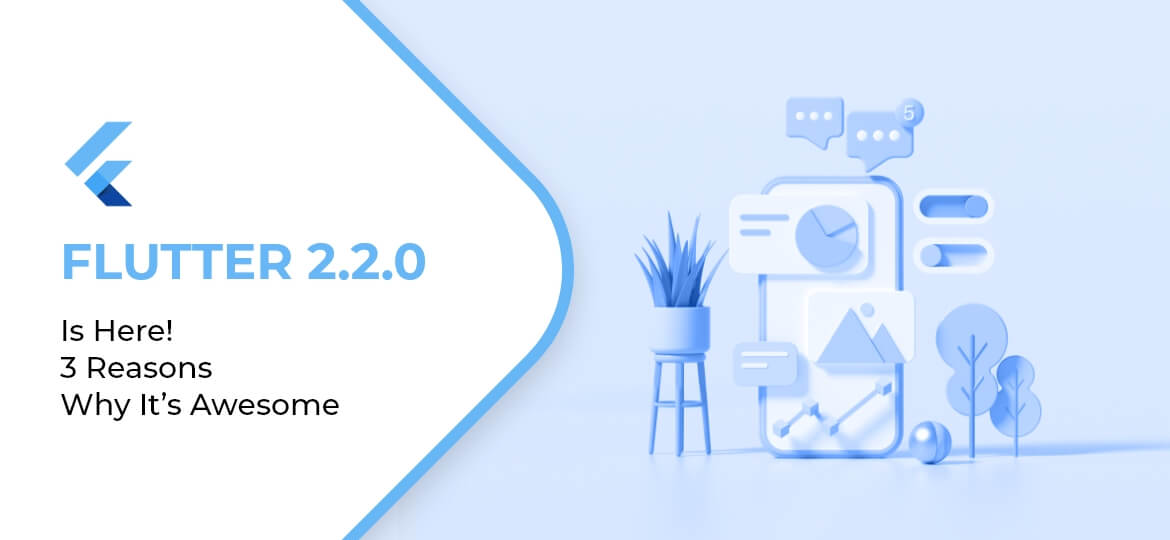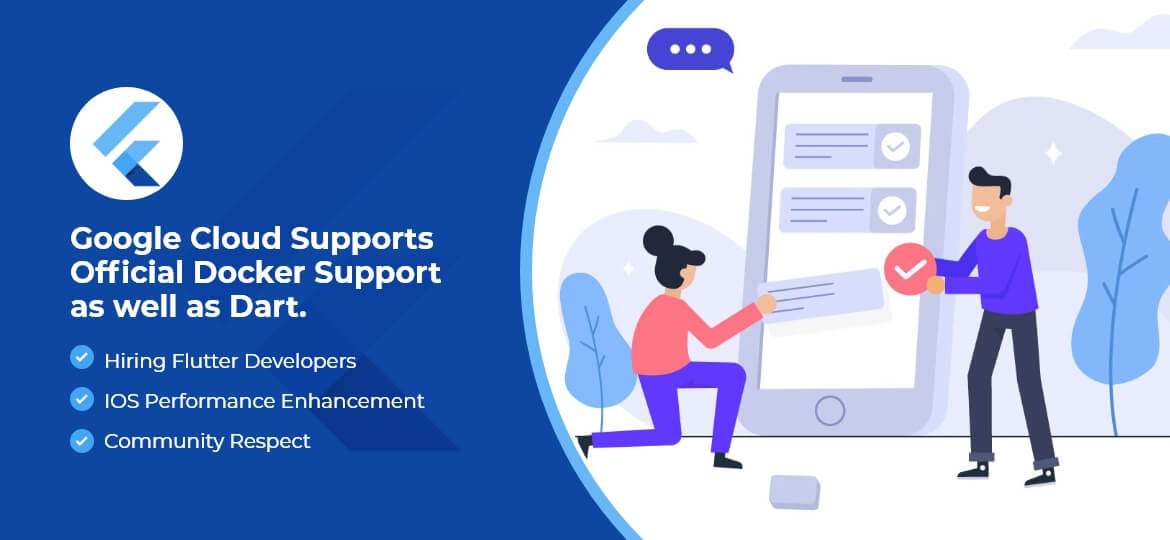
Following the successful launch of Flutter 2, Google has indicated that it plans to keep expanding the framework, which is one of its numerous initiatives. The only question then arises is what’s new in flutter 2.2?
We don’t have to be concerned about our new framework future because Google intends to make a lasting impression in the field of the mobile bridge.
Flutter is starting to grow up. Flutter 2.2.0 the latest version was announced at Google I/O 2021.
There are almost 1,000 PRs in the flutter/flutter merger and many more.
Flutter Internet, iOS enhancements, a new Dart version, coherence and cohesion, tool enhancements, and much more are all included in this version.
In this post, I’ll show you flutter 2.2.0 new features, in my perspective, are critical for Flutter developers’ future success.
Google Cloud Supports Official Docker Support as well as Dart.

On Docker, we’re obtaining verified and certified Dart images that support AOT compilation. Dart on the backend isn’t a new phenomenon. We have community-created projects like Aqueduct, Angel, and Jaguar, as well as complicated server frameworks.
1. Hiring Flutter developers
creates the frontend and backend using a single programming language offering various benefits. Because there is no distinction between backend and frontend developers, everyone has the same understanding of the project. As we all write in the same language, there’s even room for component reuse.
As we only have one developer (for example, to maintain the project), that developer can easily change between platforms if necessary, without having to wait for the development team to make modifications.
Backends developed in Dart, on the other hand, are not a popular option, as evidenced by action in the packages described before. Google wants to promote that approach with this update.
They’re even working on a package that allows us to leverage Cloud Functions in Dart, permitting us to employ virtualized solutions.
2. iOS performance Enhancement
As Flutter developers, we understand that the issue with generating shaders occurs only under specific circumstances, to avoid boosting techniques for producing. However, from the consumer’s perspective, this is a major problem that, under the worst scenario, will cause them to uninstall the application.
Google proposed caching pigments so that they are ready before the first frame. However, it was only compatible with OpenGL. We know this because the issue remains on iOS with Metal enabled by default. The ability to warm up colors will also be accessible with Metal, according to this PR. Make sure you’re on the development channel if you want to try it out!
From a commercial standpoint, the very first user experience is critical. Users may uninstall your software if the loading indicators are too long, the UX is poor, or the animations aren’t performing well. It’s great to see Google and the community working together to solve this problem.
Related Blog: Why Choose Flutter 2 Over Flutter 1?
3. Community Respect
Google does one thing better than Apple: it pays attention to its users. They conduct social media activities at every event. Flutter’s best clock, sending images to be featured on forthcoming Google events, building your dash avatar, amusing Flutter-related filters, and much more. Flutter’s evolution is inextricably linked to its community. Flutter represents the community.
They allow developers to maintain essential widgets, they acknowledge popular packages by putting them to Flutter Favorites, and they even mention them in their tutorials!
Google gives the impression that this framework goes to you, the developers, rather than to Alphabet’s shareholders.
Conclusion
These three factors indicate that Google flutter is serious about Flutter, and the days of worrying when the project would be shuttered are finally over.
Flutter 2.2.0 Is Here! 3 Reasons Why It’s Awesome




 Indonesia
Indonesia
 Botswana
Botswana
 USA
USA
 Italy
Italy
 Panama
Panama




 USA
USA UK
UK Saudi Arabia
Saudi Arabia Norway
Norway India
India Australia
Australia